Hyundai Palisade (LX2): Air conditioning System / Refrigerant Line
Components and components location
[Isometric view]

1. Front suction & Liquid pipe
assembly
|
|
[Top view]
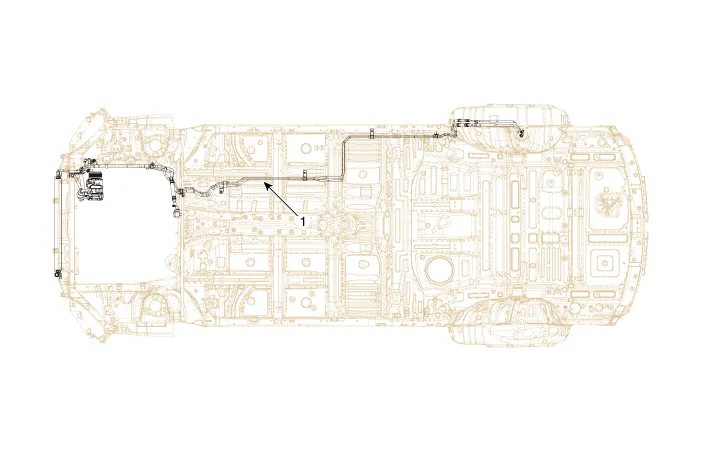
1. Front suction & Liquid pipe
assembly
|
|
Repair procedures
[Front suction & Liquid pipe assembly]
| 1. |
If a compressor is available, the air conditioner is operated for a
few minutes in the engine idle state and then the engine is stopped.
|
| 2. |
Disconnect the negative (-) battery terminal.
|
| 3. |
Recover the refrigerant with a recovery/charging station.
|
| 4. |
Remove the engine cover.
(Refer to Engine Mechanical System - "Engine Cover")
|
| 5. |
Loosen the mounting nut and remove the expansion valve cover (A).
|
Tightening torque :
8.8 - 13.7 N.m (0.9 - 1.4 kgf.m, 6.5 - 10.1 lb-ft)
|
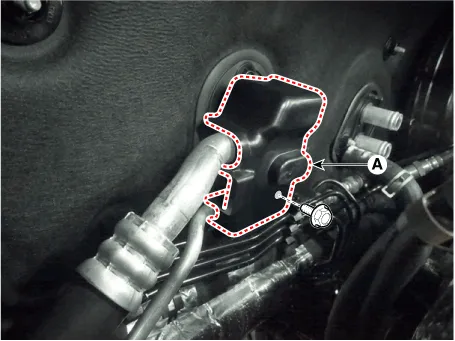
|
| 6. |
Loosen the mounting bolts and separate the expansion valve (A) fron
evaporator core.
|
Tightening torque :
8.8 - 13.7 N.m (0.9 - 1.4 kgf.m, 6.5 - 10.1 lb-ft)
|
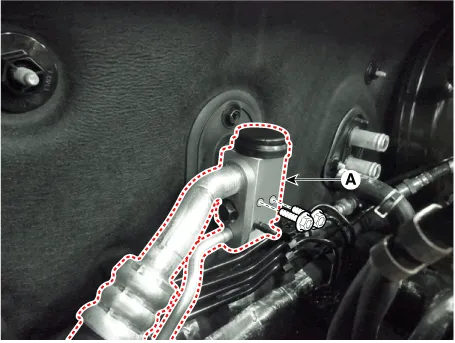
|
| 7. |
Loosen the mounting nuts and separate the suction line (A), discharge
line (B).
|
Tightening torque :
19.6 - 23.5 N.m (2.0 - 2.4 kgf.m, 14.5 - 17.4 lb-ft)
|
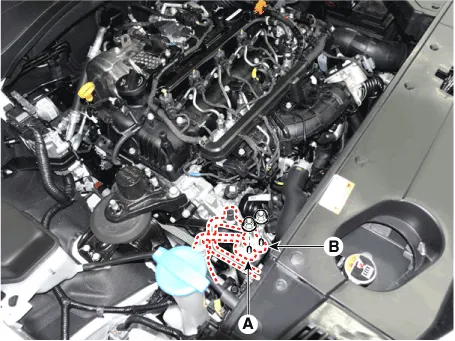
|
| 8. |
Press the lock pin and separate the APT (Air conditioning Pressure Transducer)
sensor connector (A).
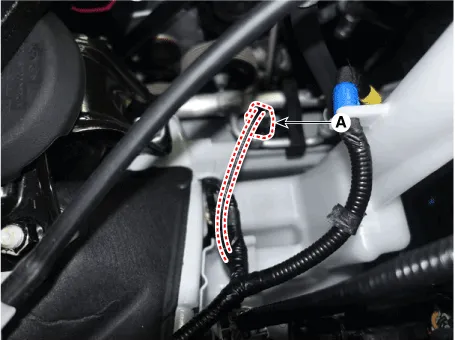
|
| 9. |
Remove the engine room under cover.
(Refer to Engine Mechanical System - "Engine Room Under Cover")
|
| 10. |
Remove the engine mounting braket.
(Refer to Engine Mechanical System - "Engine Mounting")
|
| 11. |
Separate the compressor suction line (A) and discharge line (B) connection
nuts and disconnect the line.
|
Tightening torque :
20.9 - 31.2 N.m (2.1 - 3.2 kgf.m, 15.4 - 23.0 lb-ft)
|
| •
|
Be careful not to damage the parts located under the
vehicle (floor under cover, fuel filter, fuel tank and
canister) when raising the vehicle using the lift.
(Refer to General Information - "Lift and Support Points")
|
|
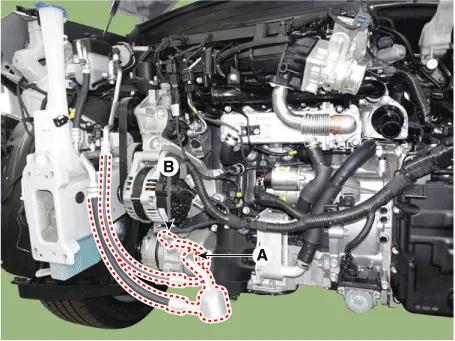
|
| 12. |
Loosen the mounting bolts, nuts and remove the engine room under cover
[RH] (A).
|
Tightening torque
8.8 - 13.7 N.m (0.9 - 1.4 kgf.m, 6.5 - 10.1 lb-ft)
|
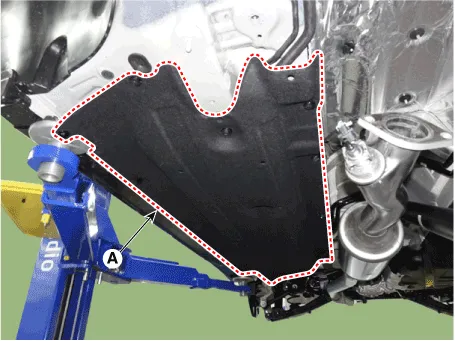
|
| 13. |
Remove the refrigerant pipe line mounting nuts and braket bolt.
|
Tightening torque :
Nut : 8.8 - 13.7 N.m (0.9 - 1.4 kgf.m, 6.5 - 10.1 lb-ft)
Bolt : 7.8 - 11.8 N.m (0.8 - 1.2 kgf.m, 5.8 - 8.7 lb-ft)
|
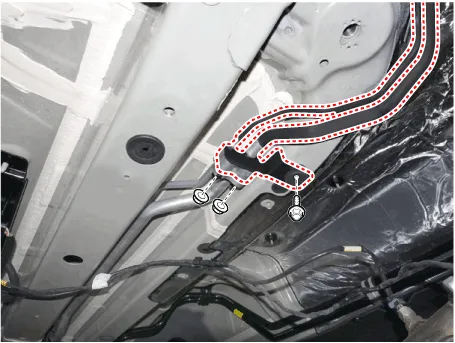
|
| 14. |
Loosen the mounting bolt and remove the Front suction & Liquid pipe
assembly (A).
|
Tightening torque :
7.8 - 11.8 N.m (0.8 - 1.2 kgf.m, 5.8 - 8.7 lb-ft)
|
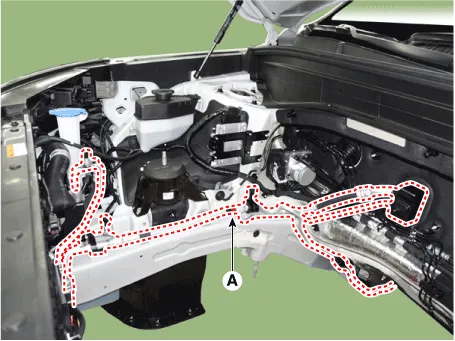
|
| 15. |
To install, reverse removal procedure.
|
| • |
Plug or cap the lines immediately after disconnecting them to
avoid moisture and dust contamination.
|
| • |
Tighten the bolt or nut joint to the specified torque.
|
| • |
Using a gas leak detector, check for refrigerant leakage.
|
| • |
Evacuate air in the refrigeration system and charge system with
refrigerant.
|
|
[Rear Suction & Liquid Pipe Assembly]
| 1. |
If a compressor is available, the air conditioner is operated for a
few minutes in the engine idle state and then the engine is stopped.
|
| 2. |
Disconnect the negative (-) battery terminal.
|
| 3. |
Recover the refrigerant with a recovery/charging station.
|
| 4. |
Remove the rear wheel guard [RH].
(Refer to Body - "Rear Wheel Guard")
|
| 5. |
Loosen the mounting nuts and separate the suction line, discharge line
(A).
|
Tightening torque :
19.6 - 23.5 N.m (2.0 - 2.4 kgf.m, 14.5 - 17.4 lb-ft)
|
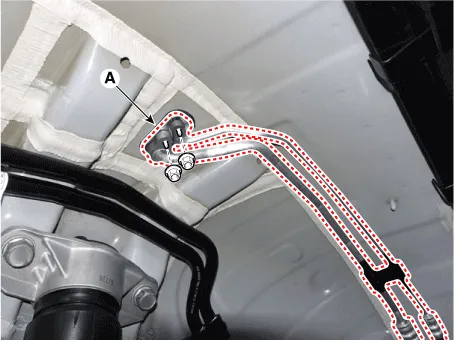
|
| 6. |
Loosen the mounting bolts, nuts and remove the engine room under cover
[RH] (A).
|
Tightening torque :
8.8 - 13.7 N.m (0.9 - 1.4 kgf.m, 6.5 - 10.1 lb-ft)
|
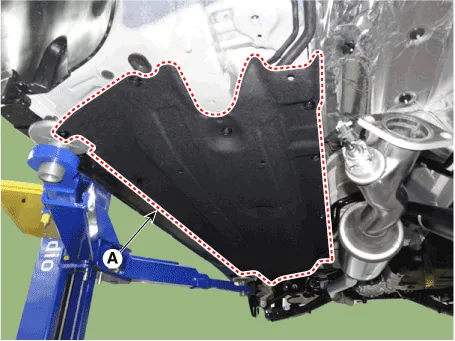
|
| 7. |
Remove the refrigerant pipe line mounting nuts.
|
Tightening torque :
8.8 - 13.7 N.m (0.9 - 1.4 kgf.m, 6.5 - 10.1 lb-ft)
|
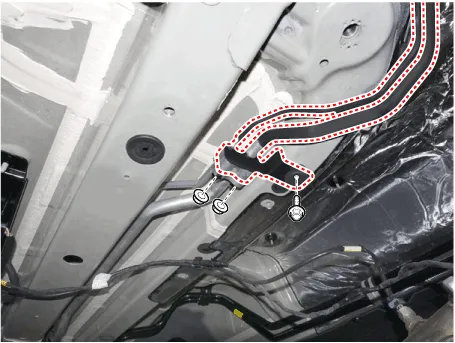
|
| 8. |
Loosen the mounting bolt and remove the Rear suction & Liquid pipe assembly
(A).
|
Tightening torque :
7.8 - 11.8 N.m (0.8 - 1.2 kgf.m, 5.8 - 8.7 lb-ft)
|
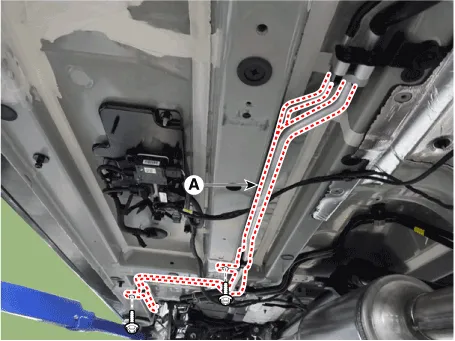
|
| 9. |
To install, reverse removal procedure.
|
| • |
Plug or cap the lines immediately after disconnecting them to
avoid moisture and dust contamination.
|
| • |
Tighten the bolt or nut joint to the specified torque.
|
| • |
Using a gas leak detector, check for refrigerant leakage.
|
| • |
Evacuate air in the refrigeration system and charge system with
refrigerant.
|
|
Repair procedures
Oil Specification
1.
The R-134a or R-1234yf system requires synthetic (PAG) compressor oil
whereas the R-12 system requires mineral compressor oil.
Description and operation
Description
The compressor is the power unit of the A/C system.
It is located on the side of engine block and driven by a V-belt of the engine.
Other information:
Instructions (R-134a)
When Handling Refrigerant
1.
R-134a liquid refrigerant is highly volatile. A drop on the skin of
your hand could result in localized frostbite. When handling the refrigerant,
be sure to wear gloves.
Replacement
1.
Disconnect the negative (-) battery terminal.
2.
Remove the luggage side trim
(Refer to Body - "Luggage Side Trim ")
3.
Separate the rear mode actuator connector (A), loosen the mounting screws
and remove the rear mode ac

















